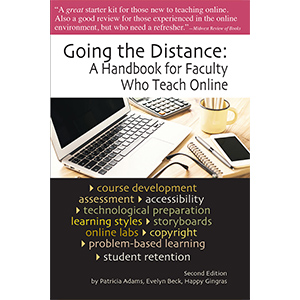Can You Say What Your Strategy is for Student Success?

by Jason Cole
As we explore the digital transformation of education, it’s essential to keep the why of the change in mind. I recently re-read a great article on e-literate by Mike Feldstein (https://eliterate.us/operational-excellence-example-california-community-colleges/). His central thesis (and I encourage you to read the whole thing) is higher ed is moving from a mission focus on student success to an operational focus. I agree. Mission statements, vendor materials, and conference presentation titles all indicate a renewed commitment to student learning.
However, we’ve seen shifts like this before. MOOCs, brain-based learning, problem-based learning, flipped classrooms, and a host of other transformation movements failed to create lasting organizational change. Resistance to change in higher education cannot be over-estimated. We all know the reasons — complex governance, faculty independence, accreditation and funding models anchored in an outdated paradigm, and lack of administrative incentives.
So how can we make this time different? While there are many pieces to the puzzle, I would suggest you ask yourself, your leadership and your colleagues one question: Can you, in one sentence, say what your strategy is for student success?
If you can’t, you aren’t alone. Leaders in many organizations can’t explain their strategy in simple terms. In 2008 David Collis and Michael Rukstad wrote in a Harvard Business Review article, “Can you say what your strategy is?”.
“It’s a dirty little secret: Most executives cannot articulate the objective, scope, and advantage of their business in a simple statement. If they can’t, neither can anyone else.”
Alternatively, as Lewis Black argues, “Here’s the law: If you have a company, and you can’t explain… in one sentence… what it does… it’s illegal!”. While not having a strategy may not be illegal, violating Black’s law has critical organizational consequences. If you can’t articulate your strategy, you can’t make decisions on what you should and should NOT do on your journey to student success. If stakeholders haven’t agreed on a plan, your student success efforts will end up trying to accomplish too many things at once.
Let’s take a moment to dig into the components of a focused strategic statement. A strategic statement, as defined by Collis and Rukstad, has an objective, a scope, and an advantage. The objective is the measurable outcome of the strategy (the “what”). The scope defines the target audience (the “who”). The advantage establishes the path to achieve it better than anyone else (the “how”).
The objective is the measurable outcome of achieving the vision. It must align with the organization’s mission and vision. For student success, a community college in an under-resourced area might decide “90% of our traditionally underserved students will graduate on time”. While a four-year teaching-oriented college might determine that “80% of our students will be able to find careers or enroll in continuing education within one year of graduation”. Both are measurable, valid strategic objectives. However, while they both target student success, they would entail very different tactics to achieve them.
Scope narrows the focus of the strategy and therefore, the organization. You can define scope by geography, student segment, or curriculum. How will you determine the students you will help become successful? Is it all the students in your service area? Traditionally underserved students? Students in your department’s majors?
Finally, and most importantly, your advantage determines how you will deliver student success. Treacy and Wiersema in the “The Discipline of Market Leaders” discuss three types of strategic advantage — operational excellence, product innovation, and customer intimacy. They argue you must have table stakes in all three, but you can only choose one as your competitive advantage.
There are examples of each advantage in the higher education landscape right now.
Operational excellence reduces costs through process design, innovation, and knowledge of the customer. EdX, Coursera, and Udacity provide a low-cost, low-risk platform for a segment of students who can be successful without the traditional face to face supports.
Other institutions leverage product innovation, creating new curriculum, courses, and innovative methods to support student success. Examples include Stanford’s experiments in flipped classrooms, University of Phoenix’s scheduling and admissions, or Austin Community College’s math lab in a mall.
For those competing on customer intimacy, the key is to know your students better than they know themselves. Customer intimacy strategies include high-touch, intrusive advising at Friends University, Zane State and others, advanced CRM and analytics at Georgia Tech and UMass Lowell and Summer Success camps like Georgia State.
So let’s put it all together. Let’s imagine you are at a community or further-education college in a traditionally under-resourced area. You might start with a strategy statement that focused on ensuring equitable student progress for local students using customer intimacy. Your strategy might read something like this:
“We will increase our student persistence to achieve an 80% 3-year graduation rate for local students from traditionally underserved communities by delivering high touch services and financial support.”
A clear statement of intent, once agreed by the institution’s stakeholders, then drives decision making. Leaders across the organization can then align plans and targets. As the CIO, I would know to focus on data systems to measure persistence, drive engagement, and enable intrusive advising. Finance and A&R would focus on operational excellence to reorient resources to student-facing roles. Innovation would happen around financial support and student tutoring and support strategies.
With a powerful statement of strategic intent, you and your organization can begin to design tactics to meet the needs. Now you can create your value propositions, align projects and initiatives, and measure the impact of your strategies. Through clearly defining our strategy, we can foster alignment and continuously evaluate our progress to our ultimate goal of student success.
Jason Cole is the editor of Learning Futures.









